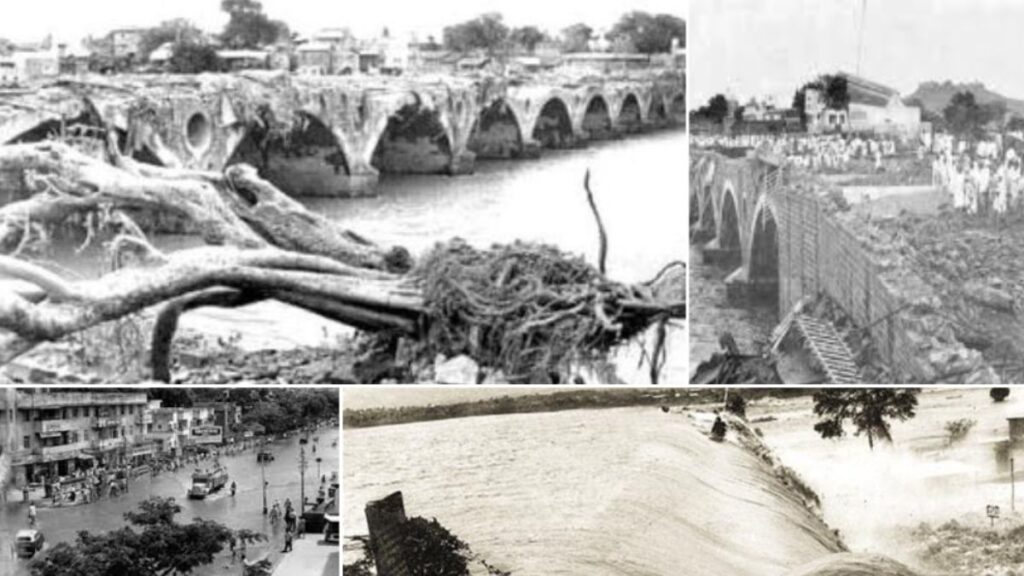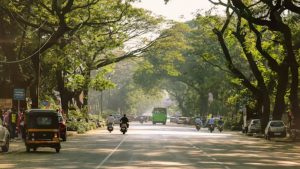Pune: Remembering 12th July, 64 Years Ago; When Panshet Dam Burst and Unleashed a Catastrophic Wall of Water Towards the City in the Middle of the Night

Photo Credit: Amit Paranjape @aparanjape
Pune, July 12, 2025 — Sixty-four years ago today, Pune witnessed the most devastating natural disaster in its recorded history — the Panshet Dam burst. The catastrophe, which unfolded on the morning of July 12, 1961, not only reshaped the geography of Pune but also deeply scarred its memory and culture, leaving behind a trail of destruction and irreversible change.
The Day Pune Drowned
In July 1961, the under-construction Panshet Dam (also known as Tanajisagar Dam), located approximately 50 km southwest of Pune on the Ambi River (a tributary of the Mutha), failed catastrophically. Built primarily for irrigation and to supply drinking water to Pune alongside the Khadakwasla, Temghar, and Varasgaon dams, Panshet Dam could not withstand the pressure of its first monsoon season.
On that fateful day, the dam wall gave way due to a fatal engineering flaw — the absence of reinforced cement concrete (RCC) in the conduit. Instead, plain unreinforced concrete blocks were used because of a steel shortage. This compromise, combined with incessant rain over a fortnight, led to a structural failure that released a massive surge of water downstream.
As the floodwaters cascaded towards the city, they also breached the downstream Khadakwasla Dam, compounding the destruction. By the time the torrent reached Pune, entire localities, especially the low-lying central areas, were submerged under several feet of water.
A City Submerged
The extent of destruction was almost unimaginable:
- Over 1,000 lives were lost and lakhs were rendered homeless.
- Entire neighborhoods, houses, factories, and bridges were swept away.
- The first floor of MES Abasaheb Garware College on Karve Road was underwater.
- Rescue boats navigated through areas like Deccan Gymkhana and Fergusson College Road.
- Riverside settlements and bridges — barring the Bund Garden Bridge — were submerged.
- Water supply and electricity were entirely cut off, leaving the city in darkness.
Noted Pune citizen Amit Paranjape highlighted the grim impact in a blog marking the 50th anniversary in 2011, describing the massive wall of water that rushed through the city, destroying structures and forever altering Pune’s landscape. He pointed out that July 12, 1961, and the 3rd Battle of Panipat in 1761 are now both embedded in Pune’s collective psyche, giving rise to local expressions like “पानशेत झालं” (Panshet zala) — meaning total disaster.
12 July 1961 – 64 years ago this day, the #Panshet dam burst forever changed #Pune.
— Amit Paranjape (@aparanjape) July 11, 2025
Under the intense pressure of flowing water, the downstream Khadakwasla dam was breached as well.
A huge wall of flood water rushed through Pune city, destroying thousands of buildings and… pic.twitter.com/C2DADW3NLE
Eyewitness Memories & Historical Accounts
Author Ashlesha Mahajan, who spent nearly a decade researching the tragedy for her book 12 July 1961, interviewed around 100 survivors. A Sahakarnagar resident, Mahajan noted that the flood remains a frequent topic of conversation in the area, many of whose residents are survivors or descendants of those affected.
Her research confirmed that Panshet Dam was a rushed project, begun in 1957–58 and slated for completion by 1962–63. However, due to policy pressures and the post-Samyukta Maharashtra Movement resource constraints, the timeline was hastened. Without sufficient steel, the dam’s critical components were compromised, leading to its failure.
Mahajan also pointed out that red markings on older buildings in Pune still show how high the floodwaters rose, serving as chilling reminders of the calamity.
Missed Warnings and Last-Minute Heroics
Despite emerging cracks, there was indecision about the dam’s condition. Fortunately, a valiant last-minute effort by Army jawans, who laid thousands of sandbags, delayed the dam’s collapse by a few crucial hours. This delay meant that the dam burst at dawn rather than in the middle of the night, preventing an even greater death toll.
Authorities began evacuating riverside residents early in the morning, but All India Radio failed to broadcast warnings, continuing its regular music programming as the floods struck. Thousands sought refuge on higher ground, including Parvati Hill, to escape the rising water.
Aftermath and Rebuilding
When the water finally receded late that night, it left behind:
- A city blanketed in mud, debris, and destruction.
- Months of cleanup and rebuilding, as most bridges needed repair or complete reconstruction.
- Entire riverside neighborhoods wiped out, giving rise to new localities like Lokmanya Nagar and Gokhale Nagar to house displaced families.
- With both Panshet and Khadakwasla reservoirs emptied, Pune faced a severe water crisis. The ancient Katraj aqueduct from Peshwa times and private wells were temporarily revived to meet drinking water needs.
- Wadas (traditional houses) that had wells prominently displayed signage to aid access.
The flood’s legacy still echoes in Pune’s urban planning and public memory. The sheer scale of water released — enough to meet Pune’s present-day water needs — being drained in a matter of hours continues to haunt the imagination of the city.
Panshet Dam Today
Today, Panshet Dam stands with its counterparts as one of the key water sources for Pune. At 63.56 meters high and 1,039 meters long, it has a storage capacity of 303,000 m³, supporting both irrigation and drinking water supply. Yet the shadow of its catastrophic past looms large, reminding Pune of the consequences of hasty development and design shortcuts.






